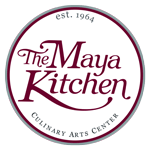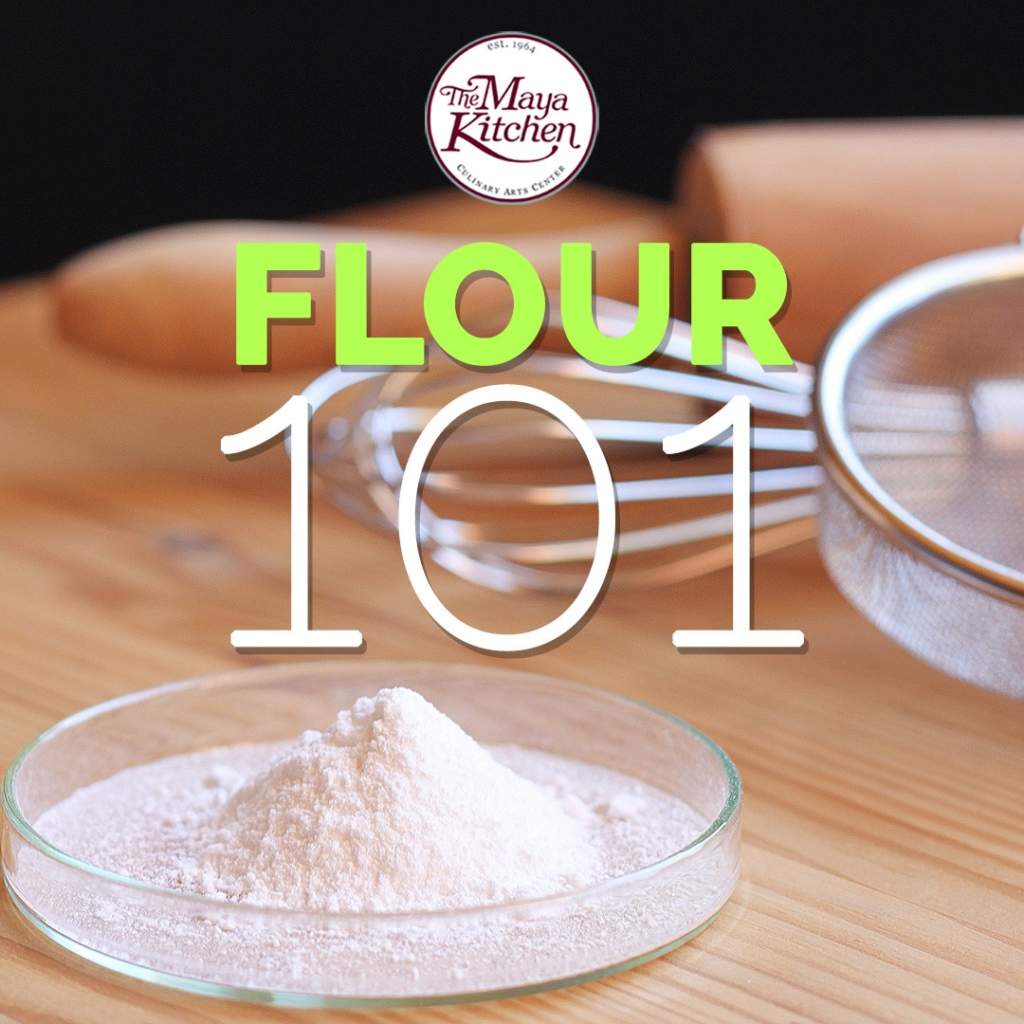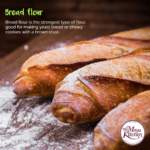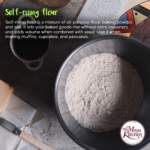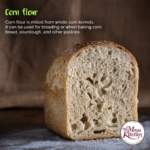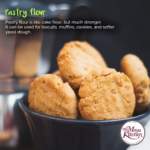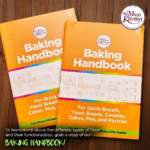Articles
Know Your Flour: Common Flours and How To Use Them
When you’re new to baking, choosing the right flour is key.
Here’s a handy guide from The Maya Kitchen chefs about which flour to use!
All-purpose flour
This is the most common and most versatile type of flour, ideal for most baked goods. All-purpose flour is a blend of soft and hard wheat, and typically has around ten to twelve percent protein content. It is available in the grocery as bleached or unbleached. Bleached flour has a softer texture and is refined. It is chemically treated to speed up the aging process, which distinctly changes the characteristics of the final product and its nutritional value. Unbleached flour is coarser and denser, giving a more structured finished product. The aging process takes longer than bleached flour, as it has to age naturally, hence making it more expensive. Unbleached flour is strongly recommended in baking due to its rich gluten content, but this doesn’t mean it isn’t chemically treated at all. This is also used as thickeners for gravies and sauces or food coatings for vegetables and meat.
Cake flour
Because of its low protein content, it’s good for making soft, delicate desserts. Use it when you want to make a white cake with a fine crumb, or cookies with delicate texture. It contains around 7-9% protein. The gluten formation depends on the protein content of the flour. Lower protein means less gluten, leading to squishy soft texture, good for red velvet cake and vanilla cake. You can make homemade cake flour using all-purpose flour and corn-starch with a ratio of 1:1. For a cup of all-purpose flour, remove 2 tablespoons and substitute it with the same amount of corn-starch. Sifting it 5-6 times will properly mix the flour, and helps produce the same consistency as cake flour.
Bread flour
Bread flour is the strongest of flour, good for making yeast bread or chewy cookies with a brown crust. The protein content of this flour is usually around 11 to 13%, stronger than all-purpose flour, just exactly what you need if you want your baked goods to have chewier and stretchy results. Because of the high protein content it needs extra kneading to build the gluten structure, so you’ll have an elastic texture. This high gluten flour is milled from the hard spring wheat – blended with a pinch of malted barley to activate the yeast enzyme that serves as the leavening agent, which helps the dough rise.
Self-rising flour
Self-rising flour is a mixture of all-purpose flour, baking powder, and salt. It lets your baked goods rise without extra leaveners and adds volume when combined with yeast. Use it when making muffins, cupcakes, and pancakes. The combination usually contains about 1 cup of all-purpose flour, 1 ½ tsps. of baking powder, and ¼ tsp. of fine grain salt. Being exposed to salt and air makes the shelf life of this flour shorter so store it in an airtight container and place it in a dark cool place. Only use this flour for recipes that call for it, as it has a leavening agent added and it’s not advisable to substitute self-rising flour for other types of flour.
Corn flour
Corn flour is milled from whole corn kernels. It can be used for breading or when baking cornbread, sourdough, and other pastries. It has quality fiber, a decent amount of protein, and boosts a number of essential nutrients – high in potassium, iron, magnesium, and several other minerals. Corn flour is typically yellow, but depending on the variety of corn it could be white or blue. Like other flour it is very versatile and can be a substitute to other flours, adding the distinct corn flavour. It is also used as a binder, filler and thickener for meats.
Pastry flour
Pastry flour is like cake flour, but much stronger. It can be used for biscuits, muffins, cookies, and softer yeast dough. It is from soft wheat and milled to a finer texture with lower protein content. Pastry flour is the excellent choice for fine crusts, pound cake and other very chewy and tender baked goods. It is usually being used when the leavening agent is baking soda or baking powder. If your baking requires structure like pastas and bread dough steer clear from pastry flour or you’ll be disappointed.
Whole wheat flour
Choose this flour to make your baked goods healthier. It’s full-flavored and is used for baking bread, dense cakes, or cookies. Whole wheat flour is ground from the whole kernel. The germ and bran are separately milled from endosperm and then added back together with the same proportions. The nutrients and mineral contents of this flour are intact with high protein, which makes it the better choice for bread bakers of loftier whole grain loaves. This flour is an excellent source of selenium, manganese, and dietary fibre – a pantry stellar: rich in flavour and healthy.
To learn more about the different types of flour and their functionalities, grab a copy of our Baking Handbook!
